BACK TO finalistS
Finalist: Architectural Category
DEPOSITION SCHOOL
Deposition SchoolThe proposal argues that uniqueness of the rural comes from the relationship between materiality and daily actions, and investigates the effects of the changing bodies of the ground on the countryside in lithological, seismic and topographic contexts, and explains these with the concept of hinterland. Deposition School in Dönemeç Village, which is located on […]
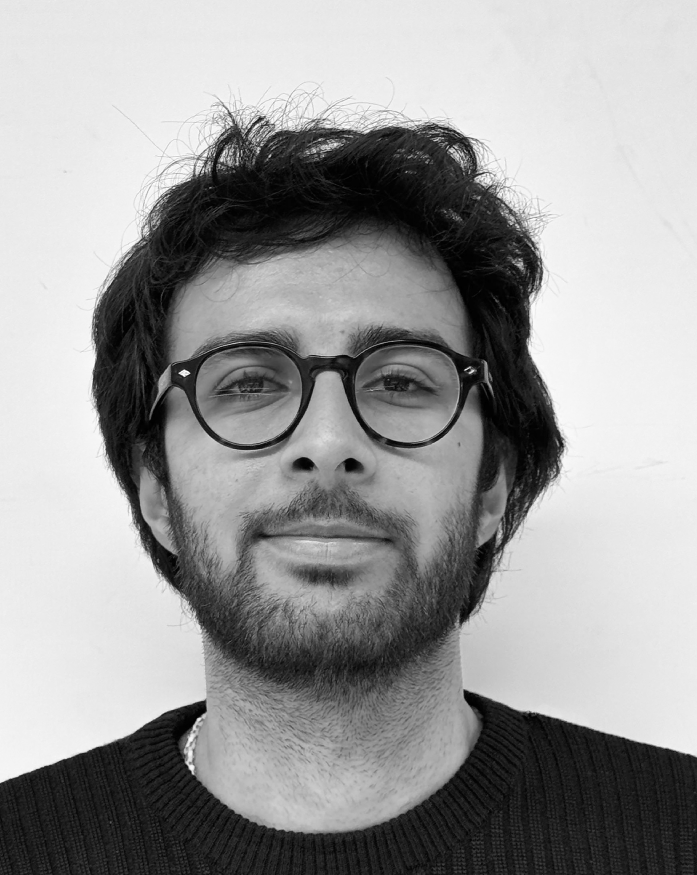
Deposition School
The proposal argues that uniqueness of the rural comes from the relationship between materiality and daily actions, and investigates the effects of the changing bodies of the ground on the countryside in lithological, seismic and topographic contexts, and explains these with the concept of hinterland.
Deposition School in Dönemeç Village, which is located on the border of the solid steppe topography of Van and the mobile ground of the delta under which the fault line passes, and through which a stream with its own name passes, sees the ground as a living entity and aims for a spatial poetics in which change is observed by establishing the space with the material cycle. The architectural scenario proposes a three-phase constructive process and includes a scenario in which scientists, with the help of a robotic system, put the calcium carbonate in the quaternary travertine underground through the precipitation process and transform it into architectural material.
The material behaves differently in each phase: at the beginning, it mediates experiments and measurements on the ground, while in the second phase, it opens the boundaries of the school and relates to the daily life of the village, and in the last phase, recreational areas that strengthen the context with Dönemeç Stream and underground waters include unexpected spatial scenarios in the architectural program.
The architectural program includes a process in which the material and energy cycle and the spatial construction are in a variable relationship with the daily and seasonal time scale of the village. It considers various speculative future constructions in which the material is dismantled, dissolved, broken or melted, and in the last phase, it includes unexpected activisms in which different profiles in the countryside collectively engage in various experiments.
Contingency of Rural Hinterland
Rural should be considered with its indigenous and forking correlation. This correlation involves dichotomy of reactions between cyclicity, weather, topography and interspecies. Rural is an idiosyncratic relation-maker.
Hinterland defines a space which is under reactive situation. Excluding natural effects, human-based exploitive actions dry hinterlands and emerge a dissonance. With notion of future and imagination, the hinterland and its changing bodies can become a space where contingent events intensify by space/relation organizer feature of architecture. Architecture may search this relation in the interscalarity, cyclicity or temporality of the hinterland.
Above the Karstic: Dönemeç Village
Dönemeç Village is a settlement where all these changing bodies of the hinterland can be clearly seen. The dominant characteristic of this place is that, on the one hand, a river originating from the mountains on the Iranian border forms a threshold here, and on the other hand, the active and various karst shapes and earth movements on the border of the delta predominate. The passing of the Şamran fault line through the village and the quaternary travertine formations seen under the village can be seen as a part of these changing bodies.
The Deposition
The project deals with the issue that the notion of hinterland can become spatial by interacting with the unexpected and temporal relations, and involves accumulating calcium carbonate, the substance of underground travertine, by passing it through various environments with the help of a seismic robotic pole and creating an architectural space from this accumulation. These spaces are established in three phases: an empirical deposition based on testing and researching, disjunction based on separation and expansion, and the meshed contingency defined by uncertainty.
The release and accumulation of matter to its natural flow over time is described as 'deposition'. The crystallization of calcium carbonate, an ecological building system, is also an example of precipitation in this respect. The proposal, which emphasizes the spatiality of mobility as the starting point of agglomerations, coincides the notion of hinterland with the daily life of Dönemeç and the daily perception of time scale with the million-year scale.
The Program and the Phases
The architectural program begins to be established with the discussion from the atlas cards led by mesh-contingency. When we combine the concepts of littoral and hinterland with the dynamics of the area, a multi-layered structure emerges and this leads us towards the architectural issue. The underground quaternary travertine formation turns into architectural material as calcium carbonate with a speculative future fiction and begins to deposition. With the seismic experiments in the first phase and the beginning of deposition, this material rises from the underground and turns into a surrounding layer.
Disassembly Scenario of the Future
The project doesn’t only envisage growth and expansion in the temporal future scenario. The metamorphosis of material with soil and natural environment, conventional needs and operational qualities suggest that some of these spaces be broken, melted, displaced, deteriorated and perhaps reassembled. These predictions show that the relationship of the material cycle with architecture can continue in all phases of the building life cycle.


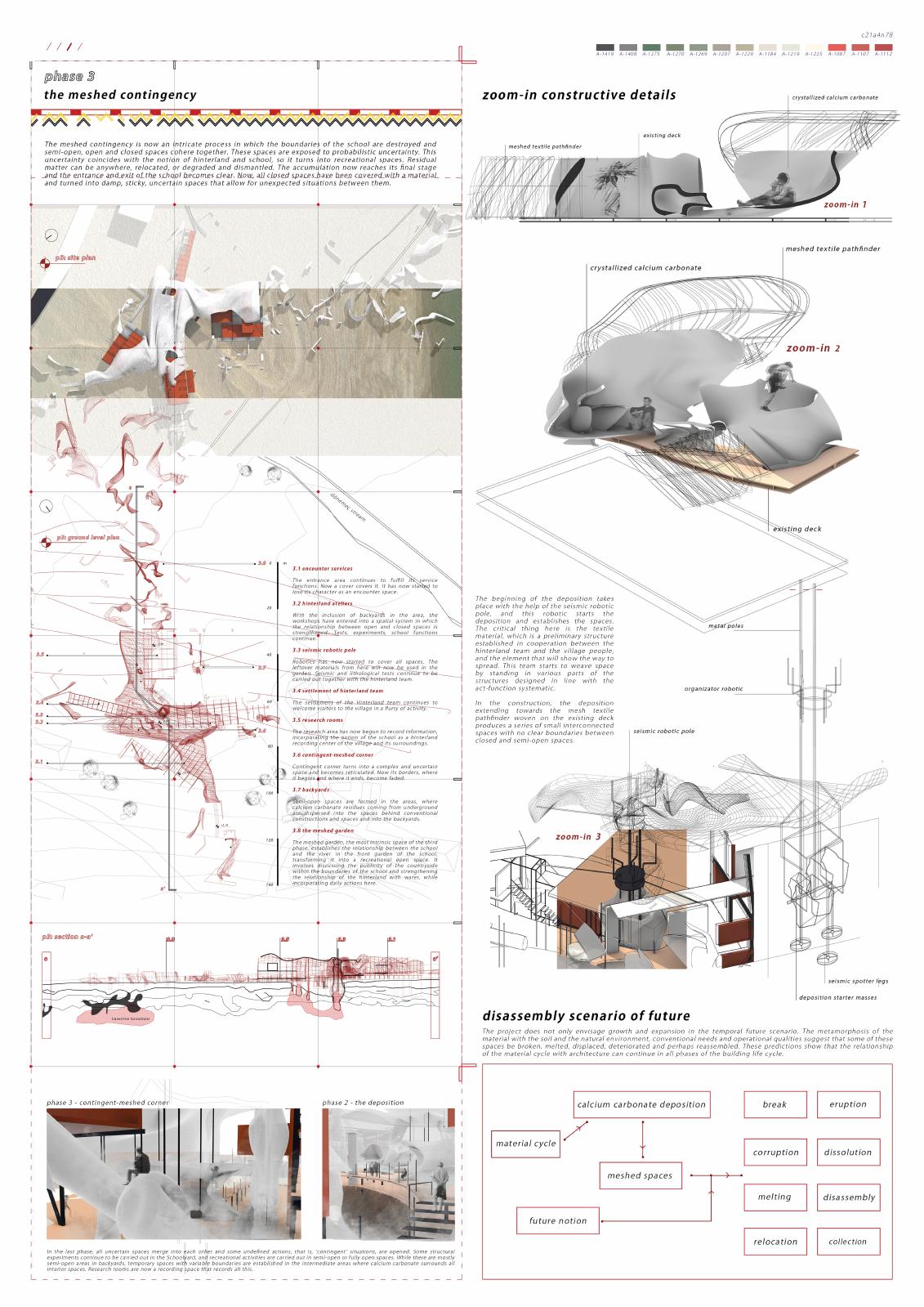

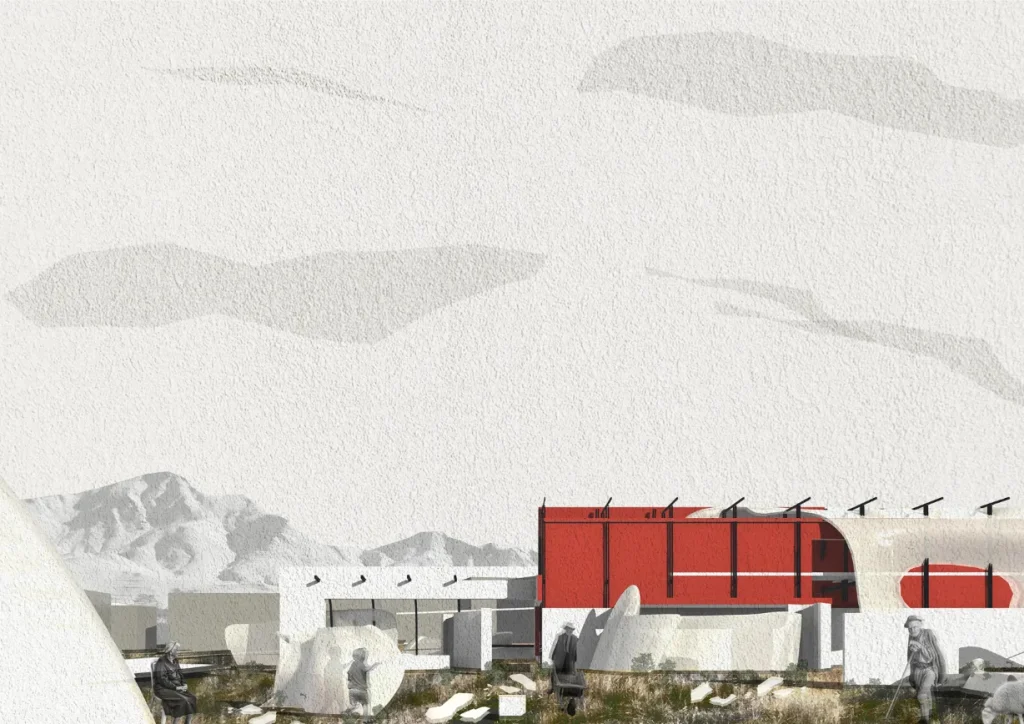
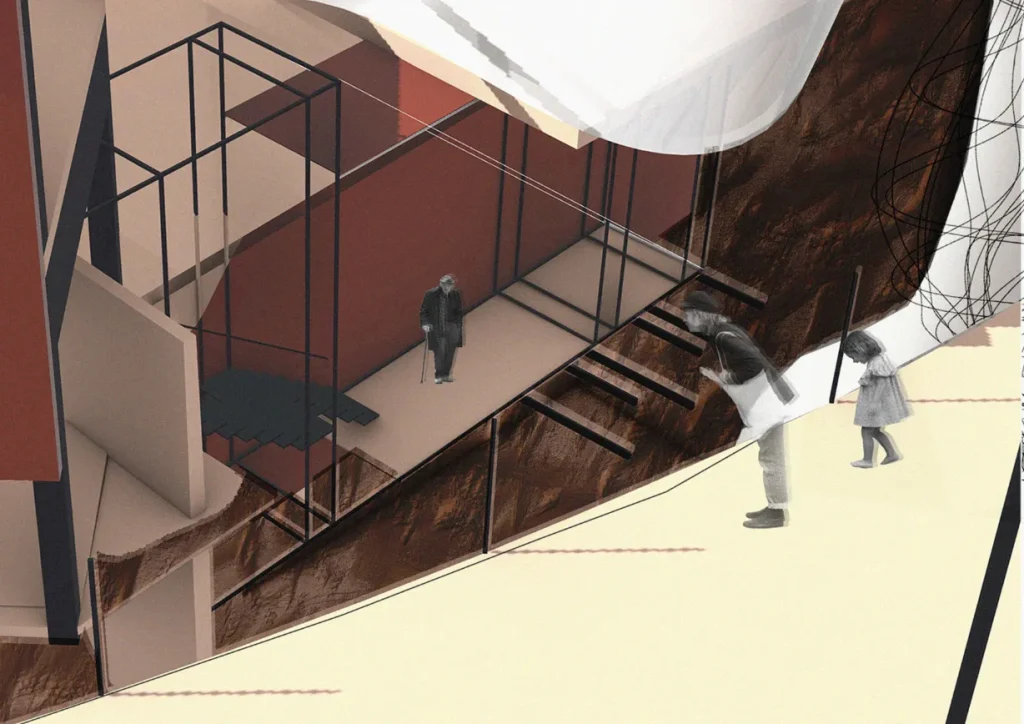

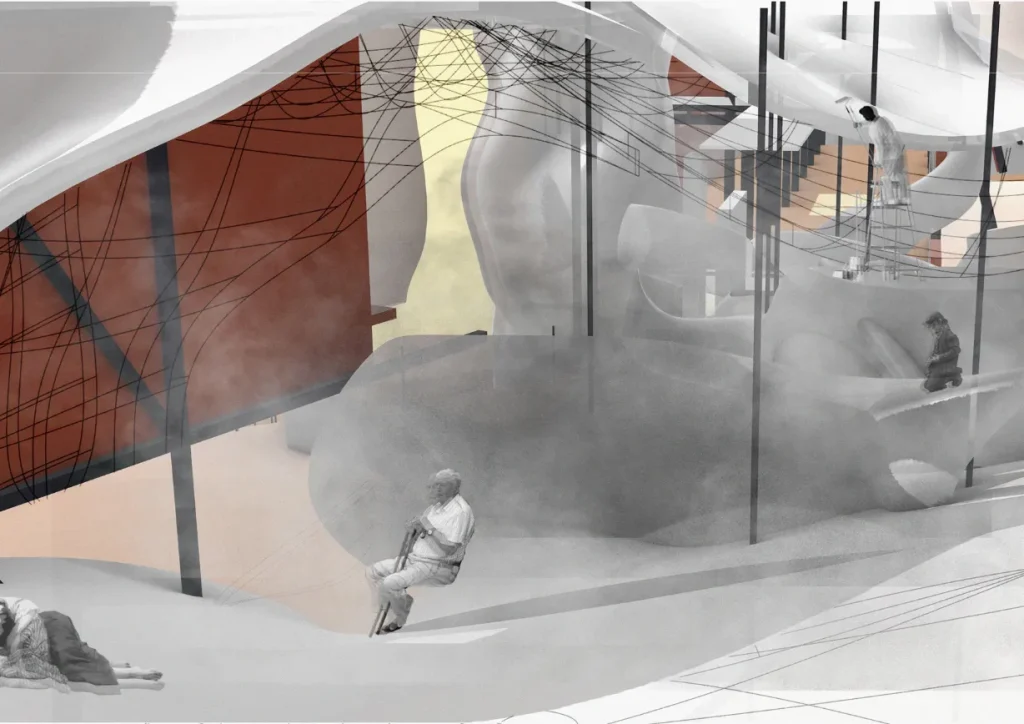

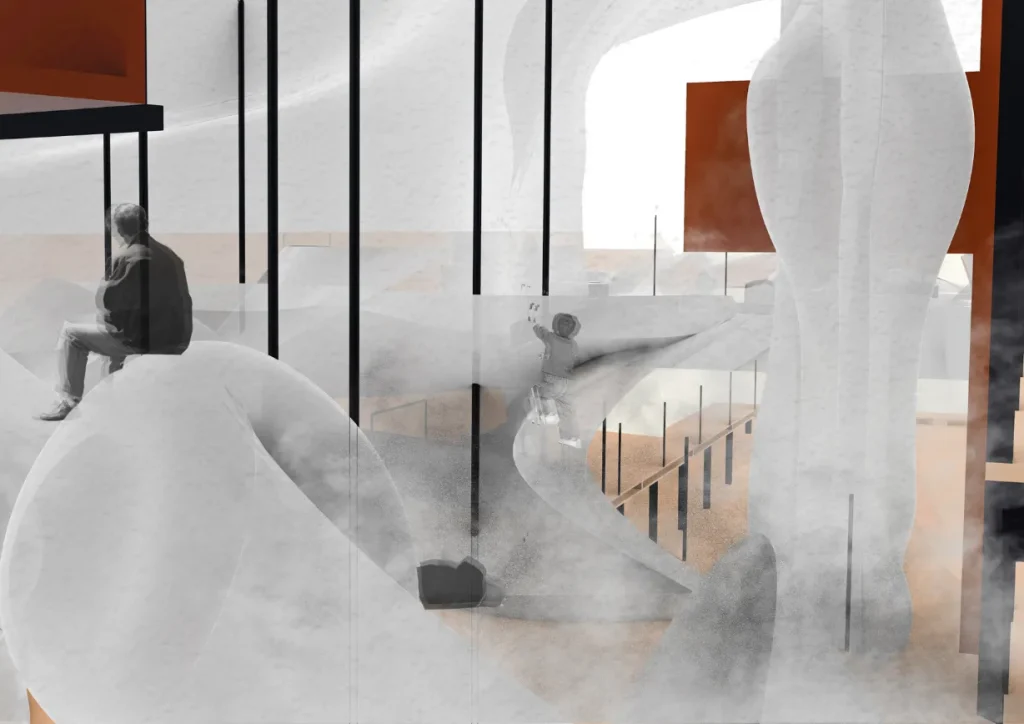
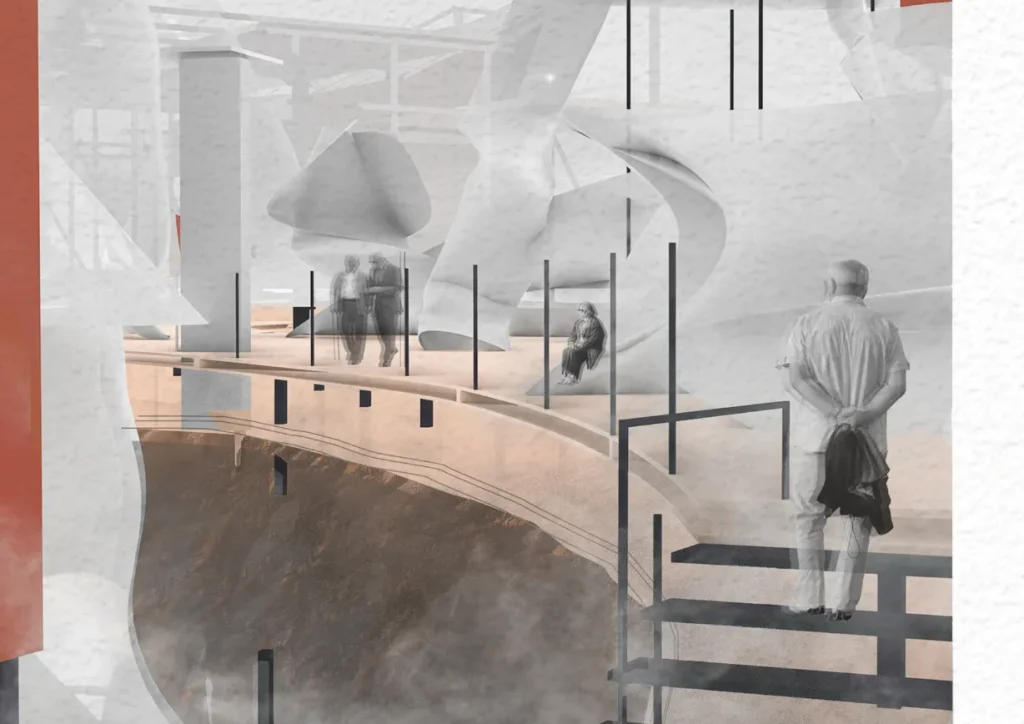
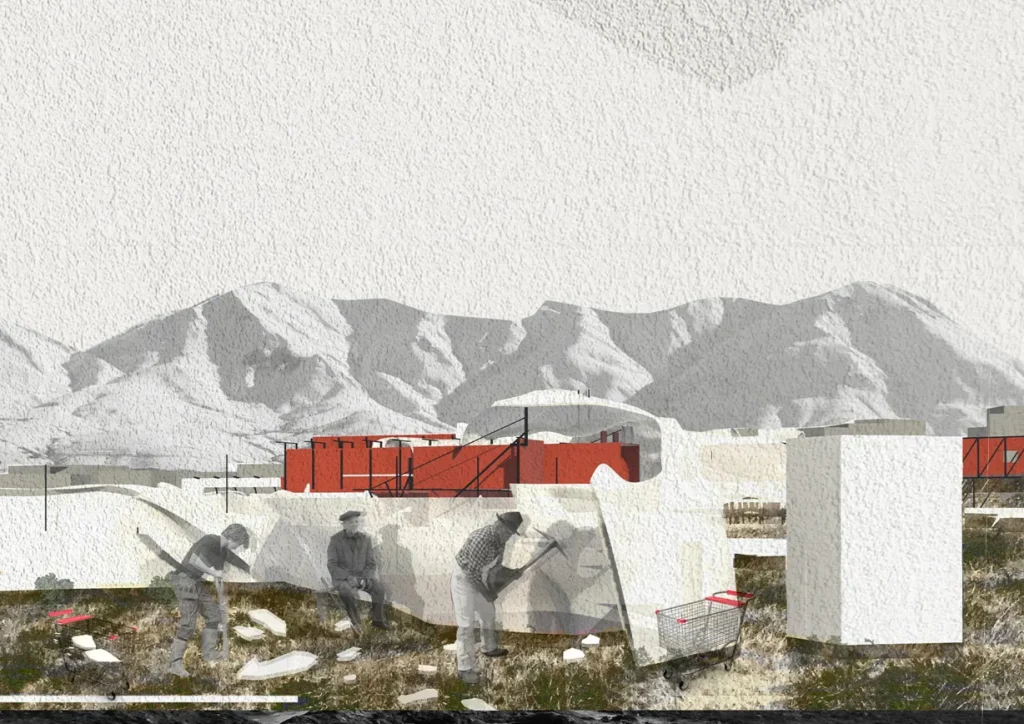
Showcase your design to an international audience
SUBMIT NOW
Image: Agrapolis Urban Permaculture Farm by David Johanes Palar
Top
Deposition School Contingency of Rural Hinterland Above the Karstic: Dönemeç Village The Deposition The Program and the Phases Disassembly Scenario of the Future
The proposal argues that uniqueness of the rural comes from the relationship between materiality and daily actions, and investigates the effects of the changing bodies of the ground on the countryside in lithological, seismic and topographic contexts, and explains these with the concept of hinterland.
Deposition School in Dönemeç Village, which is located on the border of the solid steppe topography of Van and the mobile ground of the delta under which the fault line passes, and through which a stream with its own name passes, sees the ground as a living entity and aims for a spatial poetics in which change is observed by establishing the space with the material cycle. The architectural scenario proposes a three-phase constructive process and includes a scenario in which scientists, with the help of a robotic system, put the calcium carbonate in the quaternary travertine underground through the precipitation process and transform it into architectural material.
The material behaves differently in each phase: at the beginning, it mediates experiments and measurements on the ground, while in the second phase, it opens the boundaries of the school and relates to the daily life of the village, and in the last phase, recreational areas that strengthen the context with Dönemeç Stream and underground waters include unexpected spatial scenarios in the architectural program.
The architectural program includes a process in which the material and energy cycle and the spatial construction are in a variable relationship with the daily and seasonal time scale of the village. It considers various speculative future constructions in which the material is dismantled, dissolved, broken or melted, and in the last phase, it includes unexpected activisms in which different profiles in the countryside collectively engage in various experiments.
Rural should be considered with its indigenous and forking correlation. This correlation involves dichotomy of reactions between cyclicity, weather, topography and interspecies. Rural is an idiosyncratic relation-maker.
Hinterland defines a space which is under reactive situation. Excluding natural effects, human-based exploitive actions dry hinterlands and emerge a dissonance. With notion of future and imagination, the hinterland and its changing bodies can become a space where contingent events intensify by space/relation organizer feature of architecture. Architecture may search this relation in the interscalarity, cyclicity or temporality of the hinterland.
Dönemeç Village is a settlement where all these changing bodies of the hinterland can be clearly seen. The dominant characteristic of this place is that, on the one hand, a river originating from the mountains on the Iranian border forms a threshold here, and on the other hand, the active and various karst shapes and earth movements on the border of the delta predominate. The passing of the Şamran fault line through the village and the quaternary travertine formations seen under the village can be seen as a part of these changing bodies.
The project deals with the issue that the notion of hinterland can become spatial by interacting with the unexpected and temporal relations, and involves accumulating calcium carbonate, the substance of underground travertine, by passing it through various environments with the help of a seismic robotic pole and creating an architectural space from this accumulation. These spaces are established in three phases: an empirical deposition based on testing and researching, disjunction based on separation and expansion, and the meshed contingency defined by uncertainty.
The release and accumulation of matter to its natural flow over time is described as 'deposition'. The crystallization of calcium carbonate, an ecological building system, is also an example of precipitation in this respect. The proposal, which emphasizes the spatiality of mobility as the starting point of agglomerations, coincides the notion of hinterland with the daily life of Dönemeç and the daily perception of time scale with the million-year scale.
The architectural program begins to be established with the discussion from the atlas cards led by mesh-contingency. When we combine the concepts of littoral and hinterland with the dynamics of the area, a multi-layered structure emerges and this leads us towards the architectural issue. The underground quaternary travertine formation turns into architectural material as calcium carbonate with a speculative future fiction and begins to deposition. With the seismic experiments in the first phase and the beginning of deposition, this material rises from the underground and turns into a surrounding layer.
The project doesn’t only envisage growth and expansion in the temporal future scenario. The metamorphosis of material with soil and natural environment, conventional needs and operational qualities suggest that some of these spaces be broken, melted, displaced, deteriorated and perhaps reassembled. These predictions show that the relationship of the material cycle with architecture can continue in all phases of the building life cycle.











